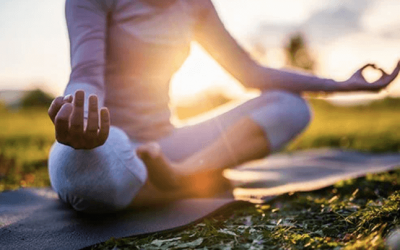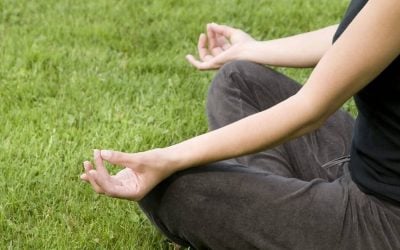Swimming – Preventing Injury
Swimming – Preventing Injury
Our wonderful coastline, lakes and river systems, coupled with a warm climate, make water-based activities extremely popular. Water sports, swimming and water play are part of our way of life.
Drowning and serious injury is too common
Unfortunately, many people drown each year, and others are seriously injured, while they are enjoying activities at beaches, rivers, lakes and swimming pools. In Australia, more children die from drowning than from motor vehicle accidents or any other cause except illness. Also, every year people are paralysed diving into shallow water in rivers and lakes.
How to be safe at the beach
Suggestions include:
- Make sure everyone in your family learns to swim.
- Swim at a beach patrolled by lifesavers.
- Swim between the red and yellow flags. They mark the safest areas to swim.
- Swim under supervision or with a friend.
- Read and obey the safety signs.
- Ask a lifesaver if you are unsure of conditions.
- Go surfing with someone else.
- Don’t swim right away after you’ve had a meal.
- Don’t swim under the influence of alcohol or drugs.
- Don’t run and dive in the water
- Check it is okay to swim before you enter the water. Remember that conditions change regularly and quickly.
- Use at least 15+ sunscreen; wear a long-sleeved shirt and broad-brimmed hat.
- Do not panic if you get caught in a rip at a patrolled beach. Float with the rip and raise one arm for assistance.
- Wear a foot strap when surfing or a wrist strap when body boarding.
How to be safe at the river
Suggestions include:
- Throw in a twig to check how fast the river is flowing. River currents are often stronger than they appear. Remember, the current is stronger around the outside of a bend in the river.
- Float on your back and travel downstream feet first to protect your head from impact with any objects if you are caught in a current.
- Angle your travel towards the shore.
- Keep watch for trees, branches, rocks and rubbish. Submerged objects can be very dangerous. Always remember to enter the water feet first.
- River conditions can change rapidly due to heavy rainfall or the release of water from storage areas. An area that is safe in the morning can be dangerous in the afternoon.
- Take care on riverbanks. They are often slippery and can even crumble away. This may cause you to accidentally fall into the water.
How to be safe at the river
Suggestions include:
- Throw in a twig to check how fast the river is flowing. River currents are often stronger than they appear. Remember, the current is stronger around the outside of a bend in the river.
- Float on your back and travel downstream feet first to protect your head from impact with any objects if you are caught in a current.
- Angle your travel towards the shore.
- Keep watch for trees, branches, rocks and rubbish. Submerged objects can be very dangerous. Always remember to enter the water feet first.
- River conditions can change rapidly due to heavy rainfall or the release of water from storage areas. An area that is safe in the morning can be dangerous in the afternoon.
- Take care on riverbanks. They are often slippery and can even crumble away. This may cause you to accidentally fall into the water.
How to be safe around a swimming pool
Suggestions include:
- Obey the pool’s safety rules and listen to the instructions of pool lifeguards. They are there to assist you.
- Play it safe. Always walk around the pool and remember to check for others before entering the water.
- Display a resuscitation chart on your home pool fence.
- Familiarise children with water by taking them to lessons at the local pool.
- Empty paddle pools when they are not in use.
Always supervise children carefully
Supervision is the key to prevent drowning. Supervision means constant watching, not occasionally glancing at your child while you read or snooze. It takes only seconds for a child to drown. Never take your eyes off children near the water. You should always take the children with you if you leave the water area, even for a moment.
Injury prevention for swimming
Common causes of injuries in swimming are incorrect technique and poor warm up. They can cause overuse injuries like swimming shoulder, which does not just affect competitive swimmers. Remember to:
- Avoid swimming with a pre-existing illness or injury. If in doubt, talk to a sports medicine professional.
- Always warm up, stretch and cool down.
- Gradually increase the intensity and duration of training.
- Get instruction from an accredited swimming coach to ensure proper technique.
If an injury occurs while swimming
The first few minutes in an emergency are vital and can make a difference between life and death. You can make a difference if you:
- Learn CPR (cardiopulmonary resuscitation) and update your training regularly.
- Keep CPR instructions on the pool fence and in a first aid kit.
- Keep emergency numbers by the phone or two-way radio. Program them into your phone.
- Call an ambulance immediately.
Where to get help
- Always call triple zero for an ambulance in an emergency Tel. 000
- Life Saving Victoria Tel. (03) 9676 6900
- St John Ambulance Tel. 1300 360 455
- Smartplay Tel. (03) 9674 8777
Things to remember
Each year people drown in the sea, inland waters and in swimming pools. Others may be injured, sometimes very seriously.
In Australia, more children die from drowning than from motor vehicle accidents or any other cause except illness.
Supervision is the key to prevent drowning. Supervision means constant watching.
Click here to read the original article
Note: All content and media on the Bacchus Marsh Dental House website and social media channels are created and published online for informational purposes only. It is not intended to be a substitute for professional medical advice and should not be relied on as health or personal advice.
Related Articles
What’s Your Colour Personality?
Ever felt uplifted seeing a colourful rainbow brighten up an otherwise grey sky or watching a spectacular orange sunset…
Health Tips for Healthy Living
“Healthy living” to most people means both physical and mental health are in balance or functioning well together in a person…
What Causes Dehydration? Here’s What You Need to Know
Your body is about 60% water. Lose even 1.5% of that H2O—the tipping point for mild dehydration—and your , energy levels, and all drop…
Stress Busters
Feeling stressed? Here, you’ll find plenty of tips to help plan for feeling better. First, let’s learn more about stress. It’s a natural…














